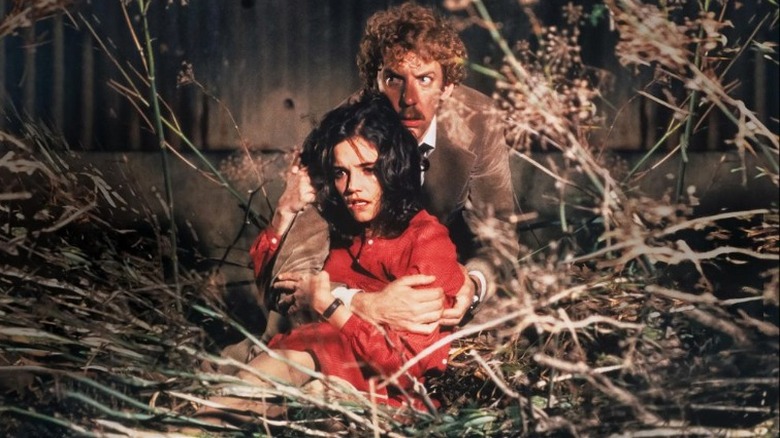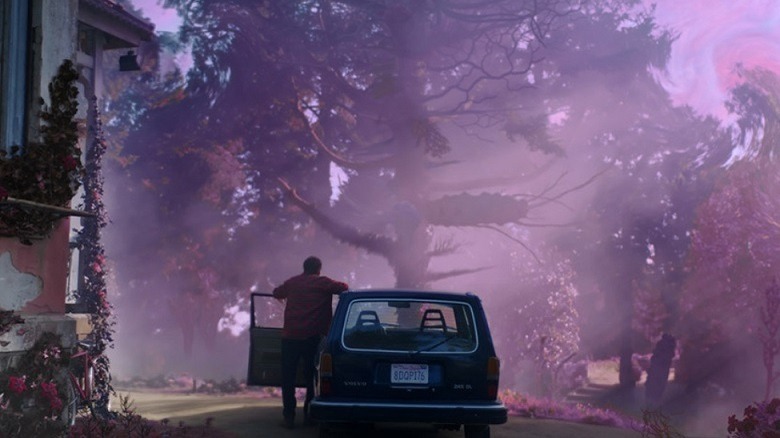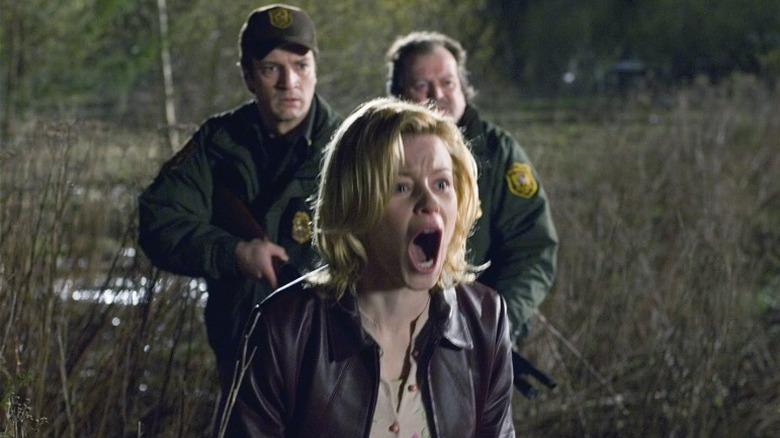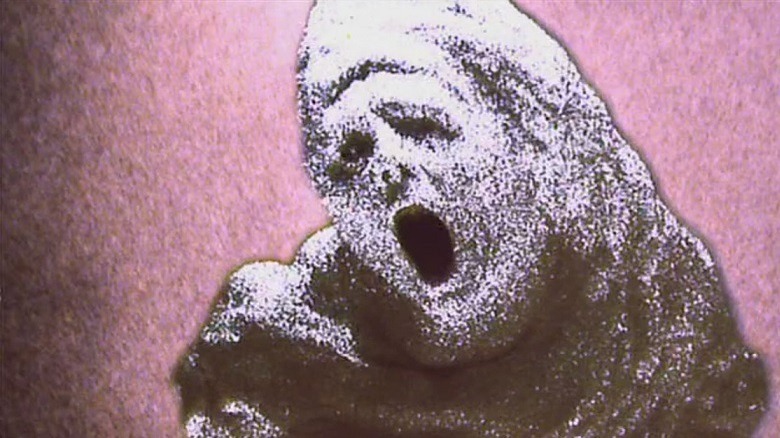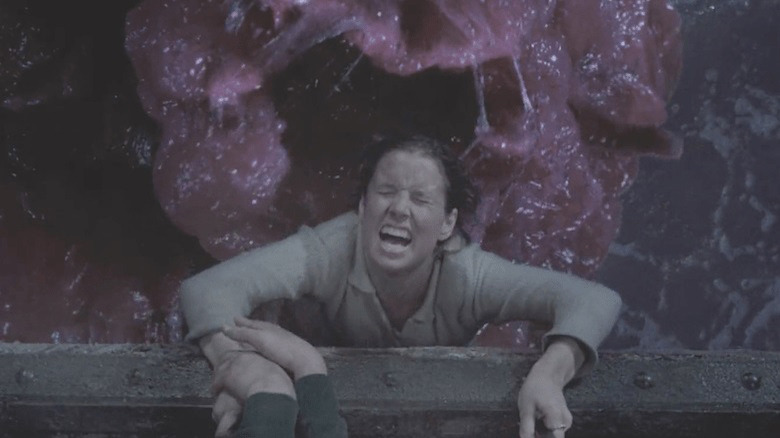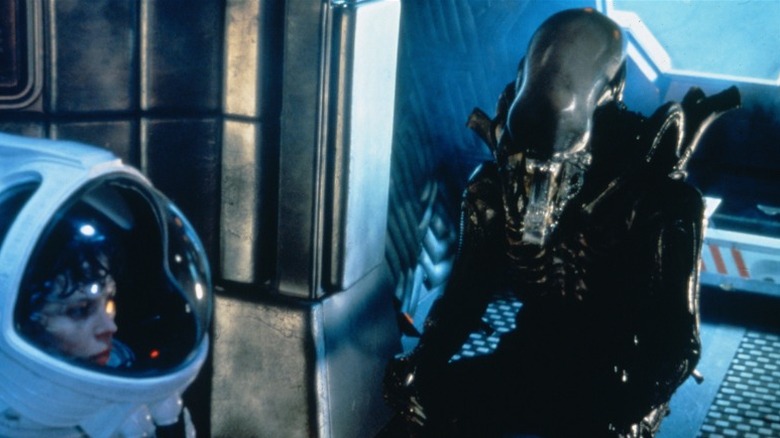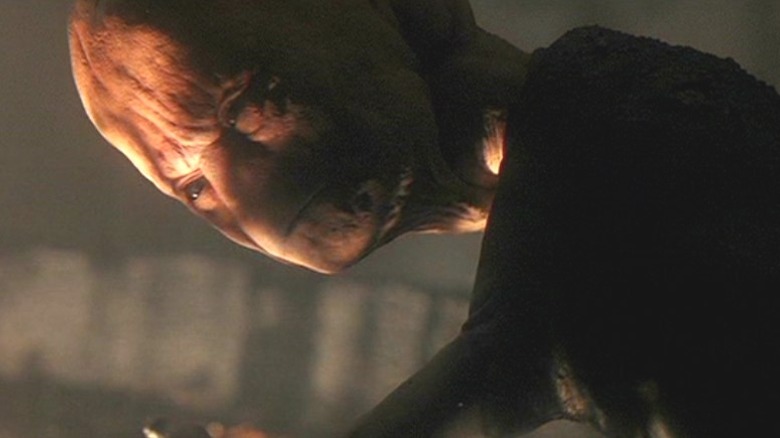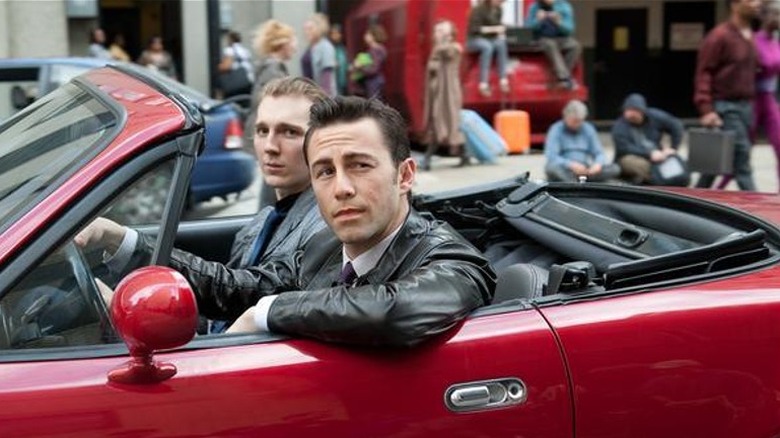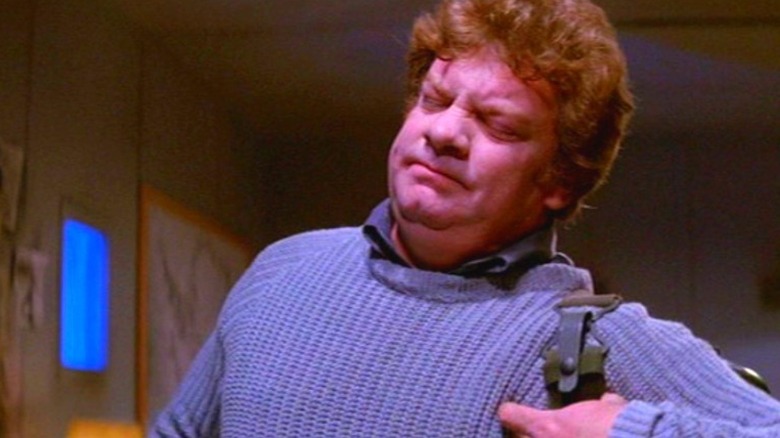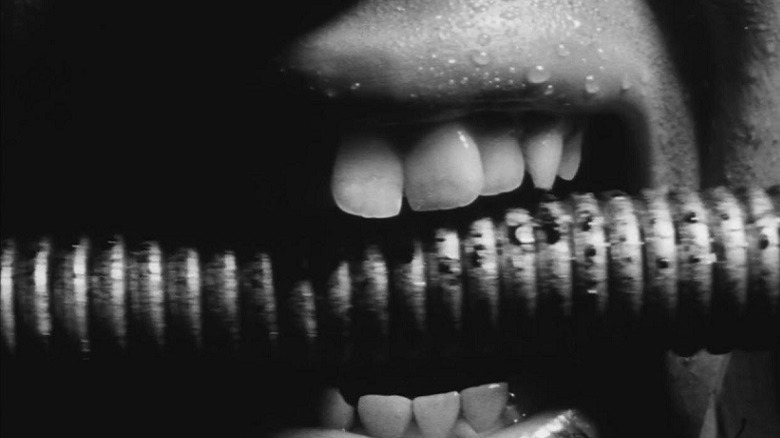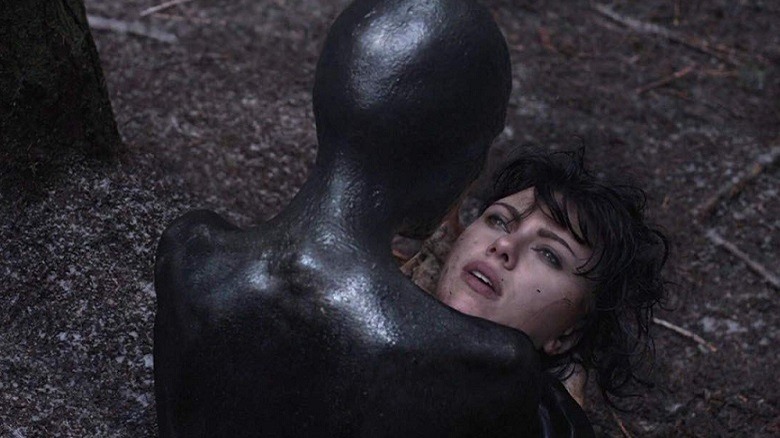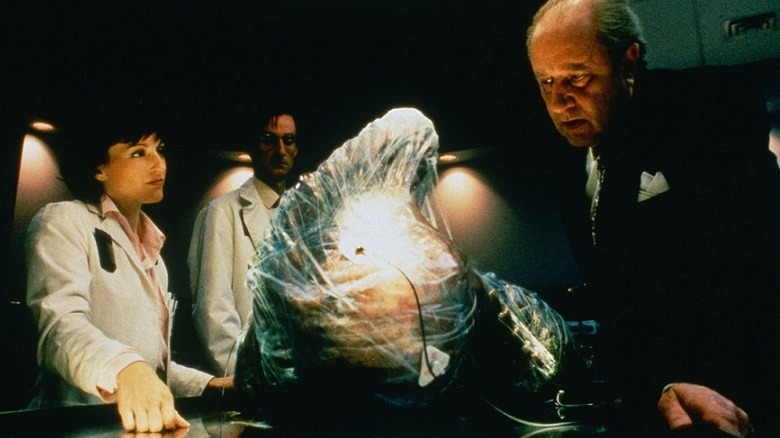14 Sci-Fi Movies That Went Too Far
We fully expect our science fiction to transport us to far-off places, to unimaginable alien vistas populated by things beyond our wildest dreams. We actively want to be confronted by the unknown on our flight of fancy. But, even for a genre obsessed with pushing the limits of outer space or the inner space of our minds, it's occasionally possible to boldly go a little too far.
Perhaps it's the theme itself that disturbs our conventional sensibilities, or where an element of horror suddenly emerges where there wasn't any, startling us like an animatronic monster popping up in a ghost train. Maybe it's a sudden shift in tone altering the film you were expecting, or not what you're presented with there and then, but that which lingers with you long after the film has finished.
Whichever applies, here are 14 examples of science fiction movies which, for one reason or another, pushed the boundaries a little too far. Let's see what's out there...
Invasion of the Body Snatchers (1978)
The central premise at the heart of both the 1956 original and the superlative 1978 remake of "Invasion of the Body Snatchers" is a terrifying one — that you will be replaced by an emotionless alien duplicate — but the sequel takes this existential nightmare one step further. At this stage in the movie the heroes have already uncovered the alien's method of invasion, that a large organic pod placed by a sleeping victim will hatch their perfect replica — but here we see the result of this process gone wrong.
As our leads attempt to navigate their way through the city, resisting showing any emotions so to blend in with the invaders, a dog scurries out into the street. No normal hound though, but one with the head of a tramp we'd met earlier. As they slept together for warmth on the streets of California, their pod replacement became a monstrous fusion of the two.
Our heroine gasps in horror, their subterfuge is revealed, and the aliens emit their familiar anguished scream. And with the image of that monstrous human/dog chimera etched on your brain, you'll struggle not to scream aloud yourself.
Color Out of Space
Another in a lengthy line of adaptations of the works of Rhode Island's own H.P. Lovecraft, cosmic horror is par for the course. In many, humanity is but an insect beneath the regard of godlike beings that could destroy us with a whim — but this isn't the most disturbing thing about this Nicolas Cage 2019 adaptation.
When a meteor falls into Nathan Gardner's farmland, it brings madness and horror, as a reality and sanity-wrenching organism has arrived with it. Struck by energy from the titular Color out of Space — which is primarily a pink purple, incidentally — Gardner's wife and son are horrifically fused together. Rather than be killed outright — the smallest of mercies — this new hybrid form survives. Believing this hideous abomination can be cured, the unstable Gardner locks them away.
The form continues to mutate, the son slowly being absorbed into the mother's mass, with both conscious and aware of their predicament. Luckily, glimpses of the abomination are brief, but its noises alone will convince you that there are worse things than death. Those gurgling utterances will stick with you long after the rest of "Color out of Space" has faded from your memory.
Slither
In this often-overlooked entry written and directed by Peacemaker's James Gunn, "Slither" is a science fiction black comedy starring Nathan Fillion that seeks to homage the fun and energy of 1950s B Movies. It features some thoroughly memorable alien critters in the form of disgusting little alien slugs that force their way into the throats of human hosts, taking them over.
The tone remains light with an air of cartoon gruesomeness until our hapless heroes stumble across a barn and the occupant within. Poor old Brenda Gutierrez has been captured by the lead protagonist Grant Grant — played with gusto by Michael Rooker — and chosen to be the host for his alien offspring.
Her body is inflated to monstrous size, resembling nothing more than a pink balloon with a tiny, attached face. Clearly in some distress, she screams in agony as her inflated form begins to convulse, and she bursts open like a piñata, albeit one filled with hungry parasitical alien parasites and not fruits and candy. You'll never look at bubble gum in the same light again.
Altered States
With both the movie and Nancy Reagan's "Just Say No" campaign occurring in the early nineteen-eighties, the former First Lady's message seemed to have missed an obvious trick. Although perhaps "Just Say No or your experiments with psychoactive drugs may cause you to devolve into a proto-consciousness" might not have looked as good on the posters.
In "Altered States," scientist Edward Jessup experiments with a combination of narcotics and sensory deprivation to tap into different states of consciousness, but his experiments take him to the brink of disaster. Firebrand British director Ken Russell might have seemed an odd choice to helm this William Hurt-starring science fiction body horror, but his sense of surrealism and spectacle turned out be the perfect fit.
Rather than a particular moment standing out, the whole movie is unnerving from start to finish. Feeling as much like a bad trip getting progressively worse as a cinematic experience, it's an amazing debut for the sadly missed William Hurt. In a movie where a far-fetched premise will succeed or fail based on the strength of its lead, "Altered States" is a surreal nightmare of a movie, discomfort imprinted on every frame.
The Blob (1988)
The 1958 original (with an unforgettable Burt Bacharach theme and a nearly thirty-year-old Steve McQueen pretending to play a teenager) was a classic fifties B-movie featuring the common trope of an alien invading a small unassuming American town. In this case, however, the alien was a huge pulsating carnivorous mass of strawberry jelly – although, as with most films of the age, the young hero saved the day.
The remake — featuring the dream team of Chuck Russell at the helm helping Frank Darabont with screenplay duties — followed a similar path, albeit moving the tale to the modern day. By the time the amorphous antagonist had arrived on the scene, the plot had firmly established our heroine and our square-jawed all-American hero...
...who promptly got dissolved within the acidic form of the mauve monstrosity, leaving nothing but a severed, twitching hand. You suddenly had an idea of how cinema audiences must have felt back in "Alien" in 1979 when Captain Dallas got the shaft in the shaft. Suddenly nobody was safe, and all bets were off. We weren't in Steve McQueen territory anymore.
Annihilation
Based on the first book of author Jeff VanderMeer's "Southern Reach Trilogy," "Annihilation" sees Natalie Portman's Lena tasked with taking a group of female recruits into a mysterious extra-terrestrial phenomenon known as the "Shimmer," the site of a meteorite impact three years previous. The laws of physics and nature behave differently within this mysterious zone, with the team encountering a variety of anomalies — alien fungi and plants growing into the shape of people, to name two.
However, it's one particular encounter that will stick with any viewer. One of the team is savagely killed by a vicious mutated bear, its face stripped to a skull. It's a later encounter with the aforementioned ursine that profoundly disturbs. Noises from the atrocity are revealed to be the echoed repeated dying cries of their deceased comrade.
Writer Alex Garland is no stranger to smart and cerebral horror and science-fiction — "Sunshine" and "Ex Machina" are two notable examples — but the noises from that damnable bear are as much nightmare-inducing as they are thought-provoking. It's scarier than the average bear, Boo-boo.
Alien
It's one of the most memorable scenes in science fiction and is as effective now as it ever was. It's the moment that elevates "Alien" from being a film about astronauts threatened by a man in a rubber suit into a truly terrifying piece of sci-fi cinema.
Executive Officer Thomas Kane, seemingly recovered from his close encounter with an overly friendly face-hugger, settles down for a meal with his fellow crew members. The mood is light, but the eighth passenger onboard the USCSS Nostromo is about to make its presence known, bloodily and messily.
So, what makes the scene work and prevents it from being gratuitous gore? A believable world, a stellar cast of believable characters, and genuine human reactions. The stage directions merely state "the alien emerges." The crew — having set up the shot — knew what this would entail, the cast, less so. None of them — especially Veronica Cartwright as Lambert, who passed out after the cameras stopped — were quite prepared for how much blood there would be. Director cruelty, perhaps, but undoubtedly cinematic magic.
Society
Imagine being the sort of person who goes into movies completely blank, the sort of person capable of avoiding teasers, trailers, and spoilers. An act difficult back in the nineties, next to impossible now. Imagine the perfect surprise of viewing "From Dusk till Dawn" in 1996 and watching as a fun and violent heist movie suddenly mutated into an amazingly over-the-top vampire movie. Then imagine that same lucky soul watching Brian Yuzna's 1989 movie "Society," being entertained by a film that feels like a David Lynch remake of "Beverly Hills 90210," and then being plunged headlong into that final act.
Imagine being confronted with that orgiastic depraved mass of writhing, entwined bodies from the fevered imagination of the appropriately named special effects pioneer Screaming Mad George. "Society" had already been a far from subtle satire of the upper class, but it's this last gleeful segment that hammers the theme home with a sledgehammer that the upper class is literally feeding off the poor.
It's as surreal as it is disgusting and will brand "Society" onto your pre-frontal cortex forever.
Fire In The Sky
"Fire In the Sky" was one of a spate of alien abduction movies possibly released to tie-in with the success of "The X-Files" TV series. When a group of six loggers encounter a UFO in 1975, one of them is abducted. Much of the film concerns the subsequent questioning of the missing man's colleagues and the skepticism of their accounts of what happened on that fateful night, but it is when the missing logger Travis Walton is found and recounts his own series of events that a decidedly average science fiction thriller becomes absolutely gripping with scenes too uncomfortable to watch.
These aren't the benevolent aliens of Close Encounters, happy to communicate with humanity by means of a jolly little ditty, but sadistic torturers. There's no sterile gleaming white lab but a dingy operating theater. Walton is partially suffocated before having alien goo bolted into his throat to stop his futile screaming. The rest of the process (thankfully) is left to our imagination.
With incredibly effective practical effects — especially for the uncaring alien observers — it's as effective a scene of horror as you'll ever see. It's also a violent and visceral tonal shift that'll cause you to recoil with whiplash.
Looper
Many medium-budget science fiction films use time travel as a gimmick, but rarely well. "Looper," however, stands above the crowd. It's a smart and fast-paced thriller about time-travelling assassins wiping out targets sent from the future, talking payment in silver strapped to the time-severed victims' bodies. These well-paid assassins know the genuine cost of their job – that one day the victim set back in time will be their future self, effectively "closing their loop."
Looper Seth (Paul Dano, Riddler in "The Batman") is the friend of the protagonist (and fellow Looper) Joe. Having failed to kill his future self, he sets in course a series of events that will pit Joe against his elder equivalent: Bruce Willis.
It's a scene that might not stand up to scientific scrutiny, but Old Seth's attempts to escape are foiled by young Seth being mutilated in the present day. In a shocking scene made worse due to a desperate Seth being unable to do anything about it, body parts begin to vanish — fingers, his nose. In the end, he has to accept the inevitable — that escape is futile.
The Thing (1982)
According to critics at the time, the whole movie went too far. Admittedly, many of the scenes from John Carpenter's remake of the 1951 B-Movie "The Thing from Another World" could be considered extreme and therefore worthy of consideration on this list, but one in particular stands out.
Quite understandably, considering all the stress of being stranded in an Antarctic base with a shapeshifting alien, geologist Vance Norris has a heart attack. It's when he's being defibrillated by Doctor Copper that Vance's chest opens up wide, revealing a gleaming set of extra-terrestrial incisors, that the fun begins.
As an armless Copper staggers backward (with a double amputee temporarily standing in for the actor), Norris' chest erupts like a Las Vegas fountain, spewing out another alien form. It's the sheer escalation of events that makes the scene sing, with everything going from bad to worse and then worse still. Culminating with the reveal of a head with spider legs that subsequently becomes a close encounter of the flambéed kind thanks to the flamethrower of Kurt Russell's MacReady, it's a scene that barely comes up for air. Considering how the scene started, here's hoping your heart's okay after it all.
Tetsuo: Iron Man
A film opening with a fetishist obsessed with embedding pieces of scrap metal into his open wounds was never going to be accused of subtlety or restraint. With this in mind, it's a fair bit to consider the whole film as going a smidgeon too far. With the protagonist — known only as the salaryman — dragged into a world of techno-fetishism and bio-mechanical horror, it's as much a frenzied fever dream as it is a movie.
Filmed in high-contrast visually striking black and white, "Tetsuo: Iron Man" is a hyper-energetic, chaotic, and experimental film — part art-house, part low-budget horror. On the rusted metal surface, it owes a debt to David Cronenberg's penchant for body horror and the melding of flesh and metal — but it's just as beholden to the work of Tomoyuki Tanaka, with many of the fights between metal-imbued twisted cyborgs feeling like clashes between scaled-down Kaiju.
Featuring scenes you'll doubtful never see in mainstream cinema — in particular, ones involving an appendage granted drill-like qualities — you'll never see the like again. Until you watch "Tetsuo II: Body Hammer," a sequel with a slightly more coherent plot but at the cost of a certain amount of weirdness.
Under the Skin
Loosely adapted from the "unfilmable" Michael Faber 2013 novel of the same name, "Under the Skin" features Scarlett Johansson as the unnamed lead, an enigmatic woman picking up men from the streets of Glasgow, Scotland to lure them into an inky black pool where they are devoured.
It's a loose plot, more concerned with atmosphere than story, but is a compelling and disturbing watch. There's a delightful ambiguity to it all; is Johansson's alien malignant or benign? Is the black void her homeworld, or a different dimension? An unconventional narrative and an abrupt ending mean that your questions will more than likely not be answered to your satisfaction, but — like the book — it'll keep you thinking.
What makes the movie chillingly effective is the fact that some of the cast aren't professional actors. In fact, many of the scenes were shot with hidden cameras. This grants the movie a rare fly-on-the-wall style, giving it an almost documentary-like appearance, bringing a mundanity to the extraordinary sights the film will present you with. The title has a dual purpose, appertaining to the true form that lurks under Johansson's earthly form as well as the fact that this film, like a splinter, will well and truly get under your skin.
The Fly 2
We can all happily accept the narrative that the good guys win, to inevitably ride off into the sunset, and the bad guys get punished. In 1989's "The Fly 2," the bad guys don't come much worse than Anton Bartok, a sociopathic CEO who will go to any lengths for power. The sequel is a pale imitation of the exceptional Cronenberg 1986 original, but it is made memorable solely through the conclusion — a standout example of "getting your just deserts." In his desperation for power, protagonist Martin — son of Seth Brundle from the first film — drags Bartok into a teleporter pod, using him to cure himself of his mutation.
It's only in the final scenes we did what this did to Bartok, with what remains of the once-great man kept alive for experimentation in the same laboratory he once ruled over. His sorry form, now reduced to a bloated maggot-like monstrosity, drags itself awkwardly to a food bowl and stares ahead with a single unblinking human eye.
Does any semblance of Bartok's human sentience or consciousness reside within that twisted form? If so, it seems too cruel a punishment, even for this loathsome man. Now that's science fiction gone too far.

